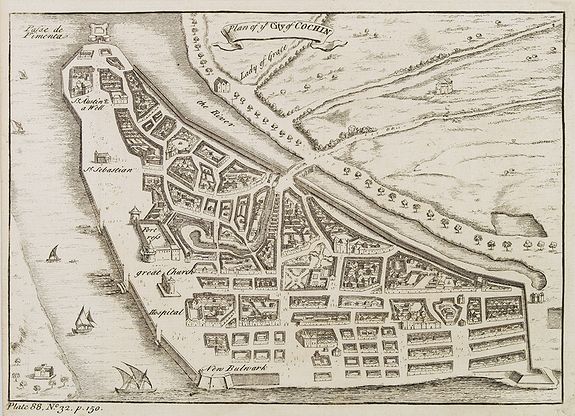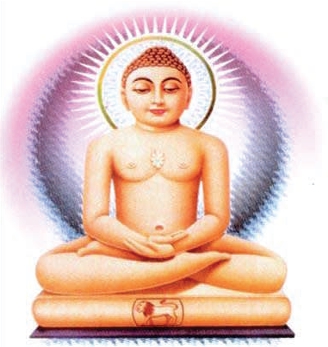The History of Gujarathi's Settlement in Kerala
The migration of the Gujaratis to the three port cities of Kerala occurred at different stages of time. The fact that it was a Gujarati who showed the Portuguese the way to Calicut is sufficient proof to say that they had earlier contacts with Calicut than the European Traders. When Muhammed Ghazni attacked Gujarat the merchants fled to different parts of the country and some of them reached Kerala. But due to the climatic conditions prevailing in Kerala none of them wanted to settle down there. They stayed there only during the business seasons. However, none of the present Gujarati settlements in Kerala traced their origin beyond 1800 A.D.
According to the existing tradition the Gujaratis have a long-standing relationship with the coastal areas of Kerala. When Muhammed Gazani attacked Gujarat some groups of Vanias were compelled to leave their homelands. The terror of Muhammed Gaazni was so dreadful in their minds that they wanted to settle down in a place where the arms of the Muslim invaders could not reach them. They considered the land Cochin as their choicest abode as it provided both peaceful atmosphere and plenty of opportunity for trade. In the year 1295 A. D. they started the migration and traveling southward they came to the territory of his Highness the Raja of Cochin. They obtained grants of land from his Highness and along with it all the security was assured to them for whatever trade they conducted there. They settled themselves in Cochin as a community keeping in tact all their religions and social customs and traditions.
Calicut was a free port and hence Gujarati traders used to visit it even before Gazni's conquest. Apart from the attraction of trade there was another factor, which paved the way for their early contacts. Between 6th and 8th century B. C. Kerala was a center of Jainism. The present Jain temple found in Calicut is 2500 years olds. Jain monks from western India used to visit this temple. The deity of the temple was Kalicund Paraswnath. When due to the reformist activities of Shri Sankarachariya of Kalady, Jainism was thrown out completely and the temple was occupied by the Hindus.
When the Jain merchants from Gujarat reached Calicut they wanted to recover the temple from the Hindus. They represented the matter to the Zamorin stating that the ancient Jain temple should be given back to them. The Zamorin who had high opinion about the sincerity and devotion of the Jain merchants and the prosperity, which they could bring to his Kingdom, handed over the temple to them. Thus the Gujarati Jains once again became the masters of the temple. The court of Zamorin included more than 1500 foreigners and among them there were some Gujarati businessmen.

Ancient map of Cochin
There were relationships between the rulers of Gujarat and Kerala. "Gujarati Manga" was a favourite word among the royal princes. When a Gujarati princess was married and brought to Travancore kingdom she was accompanied by a number of "Dasies". The Dasies who had to remain along with the princess. In due course, got married to local Nairs employed in the palace. The offsprings of this union gave berth to a community known as "Saurastras". There were a few Saurastra families around the Sri Padmanabha Swami Temple. In appearance and life style they cannot be called Gujaraties since they got freely mixed up with the local population and never cared to preserve the Gujarati culture. But during the Navaratri Celebration the women of this community performed "Garbha" dance which is a mixture of "Thiruvatirakali" of Kerala and Garbha of Gujarat. None of the members of the Saurasatra family could claim their descent to Gujarat and they appeared to be less bothered about it. They could not speak Gujarati even though they remember their grandfathers having spoken the language.
Gujarati migration in large scale and in a systematic way started only during the beginning of the 19th century. By the time waves of Gujarati migrants arrived, the early settlers formed a resources group on which they could draw for support especially to tide over the initial difficulties. They conducted their trade with the Malabar coast in the beginning depending upon the movements of the ships. The movement of the ships was entirely dependent upon the monsoon. The monsoons thus produced a movement of ships between Cochin and Calicut port and Surat and Bombay. The dependence on seasonal monsoon compelled them to stay there for a pretty long time. More than that they had to keep their goods safely. The only solution was creating some arrangements for settlement. Though begun with the intention of temporary settlement, their interests in Kerala were becoming more and more permanent by nature.
The early connections of the Gujarati merchants with the coastal towns of Kerala give an entirely different picture. The boats from Gujarat used to come to Malabar Coast sometime in July or August depending on the weather conditions. They returned in December and January. Though they had to be away from home for many days they did not have the idea of settling themselves there. We cannot find a single instance of Gujarati merchant entering into material union with a local woman. This trait is in Gujaratis alone among the early merchants who came into contact with Kerala. There were many instances in which the Arabs, the Portuguese, the French and the British having entered into matrimonial alliances with the local women at least on a temporary basis. The birth of Mappilas of Malabar and Anglo-Indian community gives amply evidence of this aspect.
The Gujaratis confined themselves to their business activities through out the days of their early settlements in Kerala. They stayed in the warehouses where their goods were stored. This isolated life continued till they began to bring their families and settle down when they were convinced that the conditions were favourable for it. When Raja Kesavadas requested a Gujarati to conduct his trade in Alleppey the latter demanded an exclusive place of live in where he could carry on his religious duties without any hindrance from the local people.
Very soon the Gujarathi merchants needed more warehouses for their goods. They had to depend upon the ware housing facilities provided by the authorities for a long time. In the early stages they were satisfied with these facilities, but as the quantum of their trade increased they needed more accommodation. Safety and privacy were two basic requirements, which they needed for the progress of their trade. They had their own ways of keeping their goods, which they could not do, in the presence or under the supervision of non-Gujarati people. They wanted to have their own warehoused unhindered by the interference of the local authorities. The Raja of Cochin in 1841 granted them a piece of land in Mattancherry for this purpose.
In Calicut they were given permission to construct a number of warehouses. The area now known, as "Bench Road" in Calicut was later developed into a Gujarati colony. In Alleppey due to the encouragement of Raja Kesavadas the Gujarati merchants were given all the facilities to store their goods. They were given an acre of land for a nominal price for the construction of warehouses.
The merchants who arrived left the scene immediately after conducting their deals. Their agents and employees were asked to remain to collect and store the goods from different centers. This was possible when the business was at low ebb. But by 1850's with the expansion of British trade throughout the world the export of Indian goods was a decisive factor. Since the Gujarati traders were the Chief exporting agents their quantum of trade had to be increased beyond all their expectations. Cochin became the center of activities where adequate facilities were available for the storage of goods and their exportation.
The number of Gujarati merchants who came to the Malabar Coast increased due to the new opportunities. Their business reached such a phase, that it become more and more difficult to manage as a temporary phenomenon, and it needed the constant and direct attention of the traders. The agents and other employees appointed by them could not look after the vast areas of business activities. These circumstances compelled them to establish permanent settlements there. As a logical sequence the first signs of Gujarati settlements were to be seen in places, which were used, as enter ports of trade.
The earliest official records available which give evidence towards their attempts to form a permanent settlement is a deed executed at the instance of Raja Kesavadas, the Diwan to Travancore granting an area in Alleppey for their exclusive use. They obtained a place in Alleppey where the merchants could construct their houses to live with their families and also negotiated a special arrangement with regards to the custom duties and port duties. They were permitted to retain jurisdiction over their own nationals as well as the local labourers they employed. Gradually they could modify the terms of the convention to suit their needs.
Though the Gujarati connections with the coastal areas of Kerala during the Sangam period also cannot be ruled out, no sources speak about their settlements in Cochin before the 19th century. A copper plate issued by the Raja of Cochin Veera Kerala Varma in the year 1929 speaks about the special favours granted to them. The "Thittooram" enumerates certain rights and privileges granted to them as a special favour. The Gujaratis found in Cochin were mostely found in three categories. First there were few firms who were exporters and importers. Secondly, there were firms who dealt primarly on the speculative markets for gold and silver. Finally there were the moneylenders and Hundi merchants.
The Gujarati settlements in Cochin started in isolation even though their general nature was to live in groups. Groups of families began to arrive when Acharya Samrakashana Company was formed by Devji Bhimji to solve their accommodation problem. In the year 1887 there was a flow of Gujarati families to Cochin. 72 families reached Cochin during the year. They were provided with necessary facilities for settlement and they could live in exclusive area where they could preserve all their traditions and practices without any local interference.
